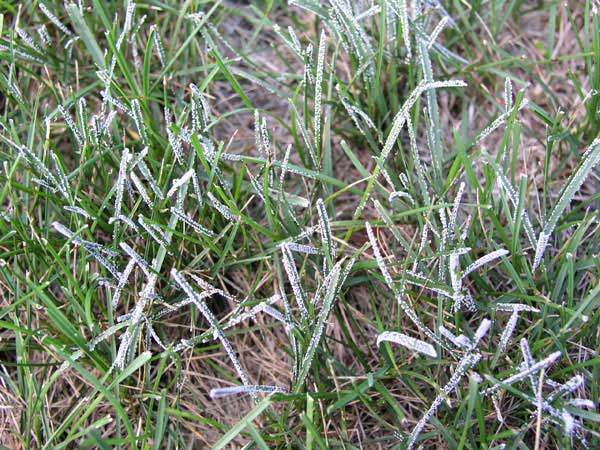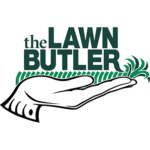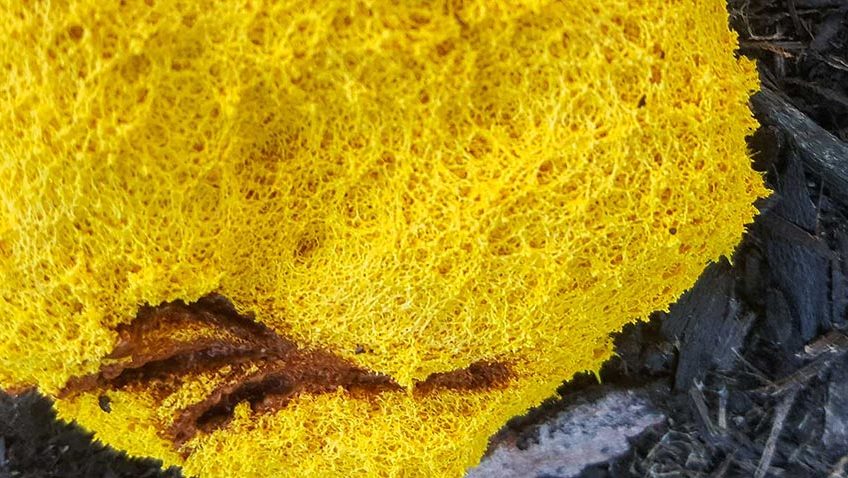Slime Mold?
While outside enjoying the beautiful weather, you notice a brightly colored growth in your mulch bed. Upon investigation, you see it is a yellowish orange blob that resembles dog vomit. Disgusting! A few days later you notice that the blob appears to have gotten even larger. Okay, this must be some sort of fungus that needs to be dealt with before spreading everywhere and ruining your cherished landscaping. You should place a call to your lawn care provider so that you can rid your yard of fungus as soon as possible!
What is slime mold?
While it appears to be some type of fungus, such is not the case. Slime molds are neither a plant, animal, nor a fungus. They belong to a class of organisms known as myxomycetes. This unusual organism exhibits behaviors that are similar to both plant and animal behavior. Moist areas cause the slime by helping spores to germinate which release amoeba cells. Eventually, these cells turn into the multicellular blobs we find in our mulch beds and landscapes. The slime mold survives by consuming pathogens and bacteria from the soil of which they are on top.
Does Slime Mold only grow in mulch?
No, there are numerous types of slime molds. Have you ever noticed an area in your lawn where it seems like a powder or dust was stirred into the air as you walked through it? This was probably slime mold as well. Looking closer at the area will reveal what looks like a type of dust or ash covering the infected area.

How to get rid of Slime Mold?
Although the mold is not damaging to the plant life surrounding it, it is definitely aesthetically unsightly. One way to remove it is to simply scoop it up and place it in a trash bag or container to be disposed of. This cleanly gets rid of the slime mold. During the reproduction stage it dries up and turns into spores. If left alone the slime mold will eventually dry up and go away on its own. You can notify your lawn care provider so they make take notice and take care of whenever it is present on your property.
Is Slime Mold dangerous?
The short answer is no. Slime mold will not harm your landscape. If in your turf the slime mold could cause some yellowing of the grass by restricting light from getting to the soil underneath of it, but that is typically the extent of the damage.
Slime Mold Fun Facts
- Slime mold is commonly referred to as “dog vomit fungus”
- There are three organism groups of slime mold myxomycetes, dictyostelids, and protostelids. Within these three groups there are over 900 individual species.
- Scientists have observed slime mold traveling a two-foot distance in one day.
Don’t be alarmed if slime mold creeps into your yard but you can be proactive in ridding your beautiful landscape of unwanted mold by simple removal and making certain your soil and lawn is always healthy and beautiful.



